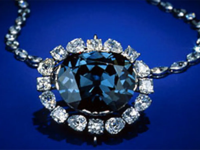I wouldn't go the lab route, but I am also done with the diamond purchases. It does look like the market trend is moving in favor of the lab stones.
A couple clips from 12/9/2023 WSJ
Man-made diamonds are catching on, despite some lingering stigma. This year was the first time that sales of lab-made and natural mined loose diamonds, primarily used as center stones in
engagement rings, were split evenly, according to data from Tenoris, a jewelry and diamond trend-analytics company.
The average retail price for a one-carat lab-made loose diamond decreased to $1,426 this year from $3,039 in 2020, according to the Tenoris data. Similar-sized loose natural diamonds cost $5,426 this year, compared with $4,943 in 2020.
Lab-made diamonds have essentially the same chemical makeup as natural ones, and look the same, unless viewed through sophisticated equipment that gauges the characteristics of emitted light.
At Ritani, an online jewelry retailer, lab-made diamond sales make up about 70% of the diamonds sold, up from roughly 30% two years ago, says Juliet Gomes, head of customer service at the company, based in White Plains, N.Y.
Philadelphia jeweler Steven Singer only stocks the natural stuff in his store and is planning a February campaign to give about 1,000 one-carat lab-made diamonds away free to prove they are “worthless.” Anyone can sign up online and get one in the mail; even shipping is free. “I’m not selling Frankensteins that were built in a lab,” Singer says.
Some brides are turned off by the larger bling now allowed by the lower prices. When her now-husband proposed with a two-carat lab-grown engagement ring, Tiffany Buchert, 40, was excited about the prospect of marriage—but not about the size of the diamond, which she says struck her as “costume jewelry-ish.”
Good luck with you shopping.

